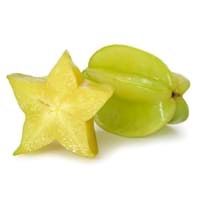Health Benefits
Cancer prevention, Improves eye vision, Prevents diabetes, Prevents high blood pressure
Cancer prevention, Heat stroke treatment
General Benefits
Cures inflamed tonsils, Helps in weight loss, Maintains healthy cholesterol level
Anti oxidant properties, Anti-inflammatory properties, Digestive aid, Maintains healthy cholesterol level, Treatment of sore eyes
Skin Benefits
Anti-aging benefits, Protects skin from oxidative stress
Anti-aging benefits, Heals sunburn, Skin rejuvenation
Hair Benefits
Protects hair
Promotes longer and healthier hair, Protects hair
Allergy Symptoms
Anaphylaxis, Coughing, Diarrhea, Eczema, Hives, Itching sensation in throat, Nausea, Skin Rashes, Runny nose, Sneezing, Swelling of mouth, tongue or lips, Vomiting, Wheezing
NA
Side Effects
Heart burn
Nausea, Vomiting
Best Time to Eat
Along with meal, As a snack in the late afternoon, Don't consume at night and before bed, Don't eat after meal, Morning time (before lunch)
As a snack in the late afternoon, Eat the fresh ones, avoid mixing with any other foods, don't eat after meal., Strictly avoid empty stomach
Vitamin B5 (Pantothenic Acid)
Vitamin C (Ascorbic Acid)
Vitamin K (Phyllochinone)
Phytosterol
Not Available
Calories in Fresh Fruit with Peel
Not Available
Calories in Fresh Fruit without Peel
Not Available
Calories in Frozen Form
Not Available
Not Available
Calories in Canned Form
Not Available
Calories in Jam
Not Available
Calories in Pie
Not Available
Type
Fruit vegetable
Tree fruit
Season
All seasons
Autumn, Spring, Summer
Varieties
Tamarillo bold gold, Tamarillo red beau, Tamarillo tango and Tamarillo teds red
King, Bell, Sri Kembangan, Arkin and Fwang Tung
Color
Orange, Red, Yellow
Golden yellow, Green
Inside Color
Creamy Yellow
Yellowish Green
Shape
Round
Oval and Star(Cross section)
Taste
Tangy, Tart
Crisp, Juicy, Sweet
Origin
South Africa
Sri Lanka
Grows on
Trees
Not Available
Soil Type
Sandy loam, Well-drained
Loam, Well-drained
Climatic Conditions
Rainfall, Warm
Moist, Warm to hot climate
Facts about
- Up until 1967, tamarillos were referred to as tree tomatoes.
- The name tamarillo is derived from Maori word 'tama' which means leadership and rillo from spanish word 'amarillo' which means yellow.
- When carambola is cut horizontally, it forms a star.
- It is believed that carambola helps to cure hangover.
- Entire carambola is edible, including its skin.
- 2 varieties of carambola are cultivated: tart & sweet.
Top Producer
New Zealand
Taiwan
Other Countries
Australia, Chile, Colombia, Malaysia, Peru, Philippines
Australia, Guyana, India, Israel, Malaysia, Philippines, United States of America
Top Importer
United States of America
Europe
Top Exporter
New Zealand
Malaysia
Botanical Name
Solanum betaceum
Averrhoa carambola
Synonym
tree tomato, genus Cyphomandra, Cyphomandra
Not Available
Subkingdom
Tracheobionta
Tracheobionta
Division
Magnoliophyta
Magnoliophyta
Class
Magnoliopsida
Magnoliopsida
Subclass
Asteridae
Rosidae
Order
Solanales
Oxalidales
Family
Solanaceae
Oxalidaceae
Species
Solanum betaceum
A. carambola
Generic Group
Nightshade
Not Available
Compare Tamarillo and Carambola
It is important compare Tamarillo and Carambola as both the fruits have a different nutritional value. Their comparison can be done on the basis of their vitamin and mineral content, calories, benefits as well as characteristics, making it easier for us to choose the best fruit for our diet. Their general health benefits are as follows:
Tamarillo Benefits: cures inflamed tonsils, helps in weight loss and maintains healthy cholesterol level.
Carambola Benefits: anti oxidant properties, anti-inflammatory properties, digestive aid, maintains healthy cholesterol level and treatment of sore eyes.
Fruits are also used as a remedy for various hair problems. The hair benefits of Tamarillo are: protects hair and hair benefits of Carambola are: promotes longer and healthier hair and protects hair. Some fruits are known to cause allergic reactions. The allergy symptoms of first fruit are: anaphylaxis, coughing, diarrhea, eczema, hives, itching sensation in throat, nausea, skin rashes, runny nose, sneezing, swelling of mouth, tongue or lips, vomiting and wheezing and the symptoms of second fruit are: na. Get sorted Tamarillo vs Carambola comparison with the help of fruit comparison tool by fruitvs.com.









